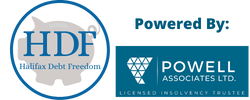The Good Bad and Ugly of Debt

Debt often gets bad press, but that’s not the entire story. Let’s look at the good, bad and ugly of debt. What is the source of debt, its uses, and its obligations?
Interest Rates and Terms
The rate on your debt is important, and it’s the first criteria for determining the good, bad and ugly of debt.
Payday loans
At the high end of rates are payday loan facilities, which market themselves as a low cost, short-term alternative. However, when you do the math, a $20 fee on a 2-week $300 loan translates to an over 170% annualized rate. (($20/$300)/14 days)*365 days). Officially, it’s a fee and not interest, which avoids Canadian usury laws.
Credit cards
Store and credit card annual rates are usually in the 19% to 29% range. This is extraordinarily high, especially under today’s interest rates with the prime rate hovering around 3%. However, credit cards have their place and uses.
Unsecured loans
Unsecured loans are next in line, typically at prime +7% to 9%, including debt such as lines of credit and consolidation loans.
Secured loans
The next type of debt is secured loans, which can be had for prime + 3% to 5%. These include items such as home equity lines of credit and automotive loans.
Home mortgages
Home mortgages vary in terms but can generally be had for prime or slightly above prime. This is because a mortgage is a specialized secured loan, with an asset (the house) backing it that has proven to hold value over time, making the loan less risky than other secured loans.
When to Use Debt
Debt can be an effective tool when used to acquire assets, especially ones that can generate income. These include real estate, investments, education, or costs associated with establishing/expanding a business.
These are generally secured debts and they have a tremendous upside. Real estate historically appreciates in value. Inventory or machinery for a business can lead to expansion. Furthering your education usually means higher earning potential. An argument can even be made for using credit to purchase an automobile, depending upon the transportation requirements/limits of your profession.
What is Bad Debt?
Whipping out a credit card to buy an expensive dinner or trinket is an example of bad debt. Anything temporary that offers only short-term gratification can be classified as bad debt.
How to Avoid the Bad Debt Trap
It’s nearly impossible to exist without a credit card. You can’t rent a car, book a hotel room, or order a product online without a credit card. Virtually everyone has at least 1 credit card. Knowing how to use that card is critical.
First, obtain a card with the lowest possible annual charge. Since many cards come with additional benefits, such as travel points, there is a benefit to using the card on routine purchases. The key is to pay the entire balance each month, avoiding the prohibitive interest rates that credit cards carry.
Picking the right time to use the right debt tool can help you grow your assets, control your costs and build a great credit rating. If you need help paying off debt, book your free consultation with us now.
